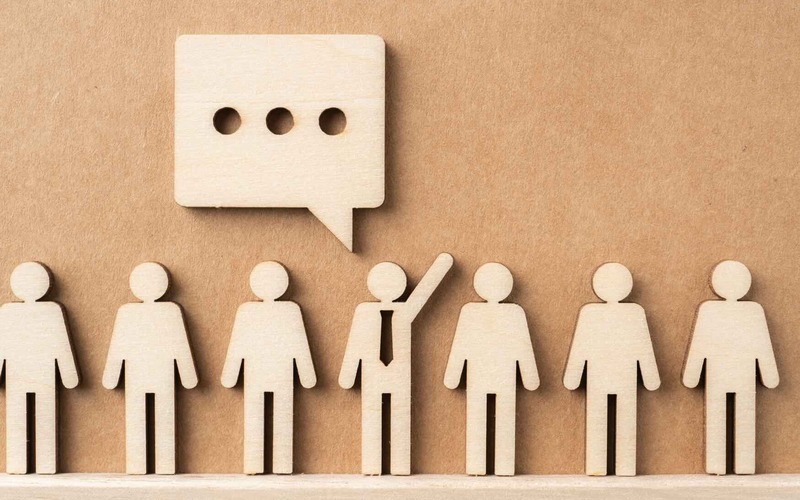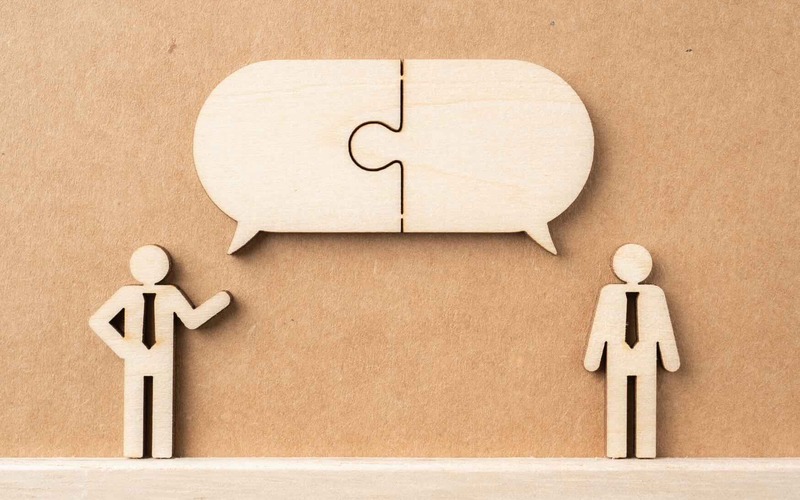Clear Communication Builds Stronger Teams

Tension brews between departments. A manager feels out of sync with their team. One employee mentally checks out and another avoids responsibility altogether. Performance drops. Friction rises. And no one can quite put their finger on why. Spoiler: it’s not the strategy. It’s not the tools. It’s not even the workload. It’s something far more invisible… and far more powerful: communication.
In this article, we’ll explore the concept of communicative intelligence. We’ll show how subtle communication patterns have a major impact on trust, collaboration, and outcomes. And you’ll get practical tips and concrete examples to help you communicate more effectively.
In many organizations, communication is taken for granted. We meet, email, chat, call... so we’re communicating, right? Not quite.
Real, clear, impactful communication goes beyond exchanging information. It’s a form of social intelligence that determines whether people collaborate or clash, whether ideas are shared or kept hidden, and whether trust is built or slowly eroded.
Clear Communication: From Informing to Connecting
Let’s be honest: a lot of workplace communication is focused on the “what.”
What’s the deadline? What are the numbers? What needs to be done?
That’s fine for short-term efficiency, but it misses something essential: connection.
The companies that truly make a difference today don’t just invest in tools or processes. They invest in how people communicate. That means:
- Listening actively without judgment
- Asking open-ended questions
- Adapting your language to your audience
- Creating space for mutual understanding
The Three Levels of Communication
Communication expert Judith E. Glaser identifies three distinct levels of communication:
1. Operational Level: Information Transfer
This is the baseline. It’s the daily exchange of information needed to get tasks done. Who does what by when. Necessary, but shallow.
2. Relational Level: Influencing and Aligning
Here, people try to persuade or understand each other. Think negotiations, feedback conversations, or conflict resolution. The interaction is richer—but also more vulnerable.
Example:
A colleague says, “So you’re going to send the invitation email?”
On the surface, it’s about sending an email.
Relationally, however, it could mean:
“I want you to handle this” (directive),
or “Just checking—should it be you or me?” (neutral).
Same words, different impact.
3. Transformational Level: Co-creating and Connecting
The highest level of communication: people build something new together. Ideas emerge, trust deepens, collaboration flourishes. This is what you see in high-performing teams where people feel safe to speak up, take risks, and admit mistakes.
Most of the time, we’re focused on level 1 or 2: informing and persuading. It’s fast and gives us a sense of control.
But here’s the thing. It often doesn’t work.
Why?
Because levels 1 and 2 are mostly about transmitting. You send, the other receives—if you’re lucky. Worst case? They send right back. The result: two parallel monologues instead of real communication.
What’s missing is level 3: connecting and co-creating.
That takes a different kind of communication. Less broadcasting, more tuning in. Less control, more connection.
So how do you do that? By paying attention to how you communicate and the impact it has on others.
What Communication Does to the Brain
Communication is like chemistry: what you say literally alters the biochemistry of your conversation partner’s brain. And that affects their willingness to share, think with you, and trust you.
Words trigger biological responses and emotions.
Interrupt someone, belittle them, or try to control them—and their cortisol (stress hormone) spikes. They’ll shut down or go on the defensive.
But if you show appreciation, ask open questions, or express genuine interest, you’ll boost their oxytocin—the trust and connection hormone.
And you’ll feel it. In the energy. In the atmosphere. In productivity.
Examples of connection-boosting language:
- “How do you see it?”
- “What do you need to move forward?”
- “I hear you. Tell me more.”
- “What can we do about this together?”
- “I appreciate your honesty.”
- “Thanks for sharing that.”
These phrases invite collaboration. They show respect, acknowledgment, and a willingness to align. They stimulate oxytocin, making people more receptive and creative.
Examples of disconnecting or polarizing language:
- “I want you to…” or “You just need to…”
- “That’s not correct.”
- “Like I said before…”
- “You don’t get it.”
- “I don’t have time for this.”
These phrases (often used unconsciously) trigger stress responses in the brain. They put people on the defensive, shrink the space for dialogue, and reduce the chances of genuine collaboration.
Tips for More Effective Communication
Strong communication doesn’t rely on fancy words or long arguments. It’s in the everyday moments—in how you listen, how you respond, and the words you choose. Here are five simple habits to instantly increase your impact in any conversation:
1. “Double-click” on what someone says
Sometimes a message sounds clear but hides more underneath.
Someone says, “This project isn’t going so smoothly.” You could jump to conclusions—or you could zoom in. Double-click.
What exactly does “not smoothly” mean? Time pressure? Poor collaboration? Lack of clarity? Frustration?
Try asking: “What exactly do you mean by ‘not smoothly’?”
This removes ambiguity and shows you truly care. Win-win.
2. Listen to connect, not to reply
Bite your tongue. Let them finish.
We don’t listen—we’re already formulating our reply: “What will I say next?” Or worse: we interrupt, jump in, give our opinion.
Real listening means being fully present. Let them speak. Reflect or paraphrase what you heard.
Quick tip: count to 3 in your head before you respond.
3. Ask curious questions
Curious questions are open, nonjudgmental, and exploratory. They spark thought and strengthen connection.
Try:
“What might I be missing here?”
“If you were in charge, how would you approach this?”
“What roadblocks do you see that we might be overlooking?”
During a company change initiative, a manager noticed growing resistance. Instead of pushing harder, he asked, “What makes this change difficult for you?”
That simple question opened the door to adjustments—and increased buy-in.
4. Watch your language, especially under pressure
In stressful moments, we tend to fall into “you-language”:
“You didn’t do that.” “You need to fix this.”
Flip it around:
“What do we need to make this work?”
“How can we tackle this better together?”
You shift the conversation from blame to shared responsibility. From you vs. me to us.
Bonus tip: Replace “but” with “and.”
Try: “I see your point, and I also notice that…”
This keeps the connection open.
5. Make space for emotions (don’t shut them down)
Emotions drive behavior. Behavior drives results.
Still, we often ignore emotions at work. Someone feels frustrated, insecure, or hurt—and we want to “fix” it quickly.
But it works much better to first acknowledge the feeling:
“I hear that this is affecting you.”
“You sound disappointed. Is that right?”
“I can tell this matters to you.”
In a sales meeting, a team member voiced frustration about a lack of recognition. Instead of countering with facts, her manager simply said: “Thanks for bringing that up. I hear that this really matters to you.”
That moment deepened trust and shifted the team dynamic.
Pro tip: When someone’s frustrated, acknowledge the feeling before you jump into solutions.
Communication as a Strategy for Better Results
Communication isn’t a “soft” skill. It’s a strategic lever.
It’s a critical success factor—in leadership, in collaboration, in change, and in outcomes.
Organizations that invest in communication build trust. Psychological safety. Speed. And collaboration that’s not just smart but also sustainable.
More informaton: Communication techniques training







